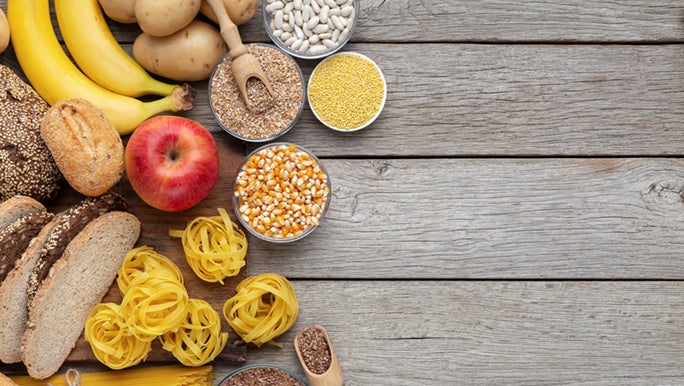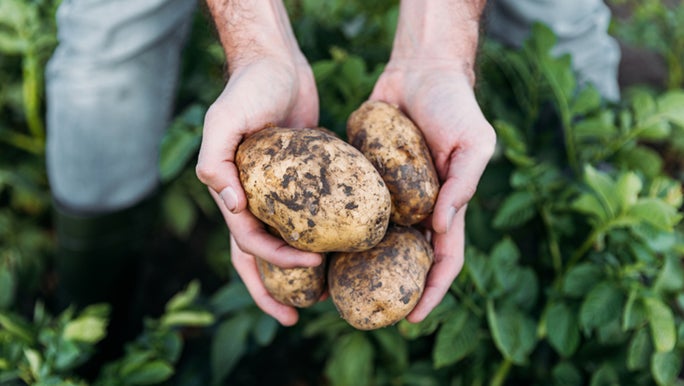If you’ve ever felt bloated or heard your stomach making loud gurgling noises, someone may have suggested increasing your dietary fibre.
But have you really understood why?
With the help of Registered Nutritionist Sarah Gray, we answer those important questions you may have felt too awkward to ask, such as:
- What is fibre?
- How does fibre help my health?
- How do I know when it’s working?
We’ve also got some simple suggestions to help you work out which food and fibre options are easiest to add to your meals.
Starting with “What is fibre?”
“The good thing about fibre,” explains Sarah, “is that it’s a natural detoxifier and helps to remove waste from your body.” Made from the indigestible parts of plant-based foods, the two main types of fibre work in different ways to help your gut function properly:
- Soluble fibre dissolves in water and becomes a gel-like substance. It slows down the rate of digestion to allow for maximum absorption and fermentation of all foods.
- Insoluble fibre helps move the digestive system along, so food isn’t sitting in your gut longer than necessary. It increases the water in your gut and adds bulk to your poop.

There are two main types of fibre which work in different ways to help your gut function properly.
Helpful for your health
Fibre has a few ways to keep you healthy on the inside so you can shine on the outside-
- Certain fibres ferment in the gut, and are classed as a prebiotic food for your gut flora.
- The bulk from insoluble fibre promotes healthy stools that can smoothly travel to the final destination.
- The gel-type substance from the soluble fibre can bind to cholesterol so it can be removed from the body.
- It can also help to regulate your blood sugar levels.
The types of poop you produce is a good way of knowing if your fibre efforts are working, so remember to have a look during your next visit to the loo.

“If you’re eating a healthy, well-balanced diet with different fruit groups, then you're going to get enough fibre from fruit, veggies, whole grains and legumes.” says Sarah.
Figuring out your fibre needs
Sarah assures us it’s not necessary to know how to calculate fibre content in food.
“If you’re eating a healthy, well-balanced diet with different fruit groups, then you're going to get enough fibre from fruit, veggies, whole grains and legumes.”
To help you along, Sarah recommends checking out this handy fibre fact sheet, which lists some high-fibre foods in Australia.
But if you aren’t sure how much is enough, or you’re taking a fibre supplement, check in with your health professional. They’ll let you know if you’re doing the right thing.

When buying pasta or bread, look for wholegrain or wholemeal versions.
Healthy high-fibre dinner options
Including high-in-fibre foods into your meals doesn’t have to be complicated:
- When buying pasta or bread, look for wholegrain or wholemeal versions.
- High-fibre cereals, such as shredded wheat flakes or steel-cut oats, make an easy breakfast choice.
- Adapt family-favourite recipes to become more high-fibre meals by adding legumes to spaghetti bolognese or a serving of green peas with your steak.
- Keep the skin on fruit such as kiwifruit to give some extra ‘oomph’ when helping to control constipation. “Pears are also a fantastic source of fibre,” adds Sarah.
Potatoes are good for gut health too. Potato fibre is called resistant starch, but it acts in a very similar way to normal fibre. So, your mash or roast is doing more good than you thought. You can also whip up a potato salad to boost your gut health - cooking and cooling potatoes before eating them increases the level of resistant starch, which in turn helps your gut health.

Potato fibre is called resistant starch, but it acts in a very similar way to normal fibre.
Taking the high-fibre road to health
When planning your meals for the week, it’s good to include a variety of foods to help you cover your fibre needs. Many fibre-licious options are also foods that help improve gut health, so you can get your gut glowing in no time.
Related:
Sarah Gray is both a Registered Pharmacist and Registered Nutritionist with a particular interest in health education and helping people to take small steps to big changes in their health journey. Sarah is a member of the healthylife Advisory Board.
Reviewed by the healthylife Advisory Board May 2022.




